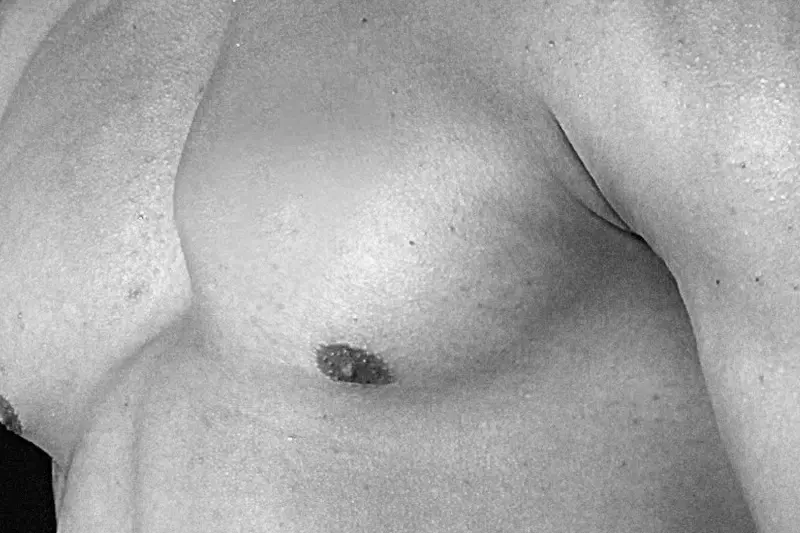Have you been hitting the gym regularly but are still struggling to achieve that sculpted, masculine chest you’ve always wanted? Then male pectoral implants surgery might provide the solution. This chest implant procedure for men has become increasingly popular among those who feel self-conscious about an underdeveloped or asymmetrical chest. Whether it’s due to genetics, injury, or other conditions, implants can help you get that defined, athletic look that workouts alone can’t always achieve.
For anyone considering pectoral implants, understanding how to prepare for the procedure can make all the difference. This not only supports a smoother surgical experience but also promotes faster and more comfortable recovery.
What Is Male Pectoral Implant Surgery?
Pectoral implant surgery is a cosmetic procedure for men designed to enhance the chest’s shape, size, and symmetry, creating a more defined and muscular appearance. The procedure involves placing solid silicone implants under the pectoral muscles to create a natural-looking, masculine contour.
An incision of about two inches is made in the armpit, through which the surgeon inserts the implant under the pectoralis major muscle. Once the implants are positioned correctly on both sides, the incisions are closed. The entire procedure takes around two hours.
Male chest enhancement surgery is ideal for men who have difficulty building muscle in the chest area despite consistent training or who have congenital or injury-related asymmetry. When performed by a skilled plastic surgeon, the results look completely natural, enhancing your physique and boosting your confidence.
How to Prepare for Male Pectoral Implants Surgery
Preparing for male pectoral implants surgery begins with choosing the right surgeon and following their preoperative guidelines carefully. Preparation plays a major role in ensuring a smooth procedure and optimal recovery.
Here’s a step-by-step guide to help you get ready:
- Choose a Qualified Plastic Surgeon
- Look for an experienced plastic surgeon with proven experience in pectoral implant procedures.
- Check whether the practice is AAAASF-accredited (American Association for Accreditation of Ambulatory Surgery Facilities).
- Review before-and-after photos of previous patients to understand the surgeon’s skill and aesthetic approach.
- Schedule a detailed consultation to discuss your goals, implant size options, and overall expectations.
- Get a Comprehensive Medical Evaluation
Before your surgery, your surgeon will review your medical history and perform a physical examination. This ensures you’re healthy enough to undergo the procedure.- Be honest about any medications or supplements you’re taking.
- Discuss any previous surgeries, allergies, or existing health conditions.
- Follow Preoperative Instructions
Your surgeon will provide a list of pre-surgery guidelines that you must strictly follow. These instructions are crucial for a safe procedure and smooth recovery.Here are some key things to remember:
- Quit smoking at least two weeks before your surgery to improve blood circulation and healing.
- Avoid aspirin, anti-inflammatory drugs, and herbal supplements as they can increase bleeding risk.
- Stay hydrated in the days leading up to your surgery to aid recovery.
- Avoid lotions or shaving cream on your chest and arms before the procedure.
- Arrange transportation, someone should drive you home after surgery and, if possible, stay with you the first night.
- Prepare loose, button-up shirts to wear post-surgery to avoid straining your chest muscles.
- Prepare Mentally and Physically
Being in good physical and mental shape will help you recover faster.- Eat nutritious meals and maintain a balanced diet.
- Avoid alcohol before surgery.
- Make sure your home recovery space is comfortable, with easy access to essentials and minimal lifting required.
- Understand What to Expect
Your surgeon will explain every detail of the procedure, from anesthesia to incision placement and recovery timelines. This is also the right time to ask questions like:- How long will I need to take off work or exercise?
- What kind of scarring should I expect?
- When can I return to my normal routine?
Knowing what lies ahead will help you manage expectations and reduce anxiety.
Before your surgery date, take these additional steps to ensure you’re fully prepared:
- Confirm your post-op appointments in advance.
- Stock up on prescribed medications and medical supplies.
- Arrange for assistance during the first few days after surgery.
- Keep your surgeon’s contact details handy for emergencies.
Remember, preparation is the foundation of a successful male pectoral implants surgery. Following your surgeon’s pre- and post-op instructions will minimize risks and promote faster healing.
Recovery and Results
After the procedure, you can expect some tightness and mild discomfort in the chest area, which will subside as your body adjusts. Most patients return to non-strenuous activities within a week and can resume workouts in about 6–8 weeks. It is important to get enough rest and sleep for smooth and fast recovery. When performed correctly, the implants stay well-hidden beneath the tissue and blend seamlessly with your natural muscle tone. They enhance not just your appearance but also your self-confidence and body image.
Undergoing pectoral implants surgery is a big decision that requires proper planning and preparation. By choosing an experienced surgeon, following preoperative advice, and taking care of your health, you can achieve the chiseled, masculine chest you’ve always desired.
Whether you’re seeking to correct asymmetry or simply enhance your physique, pectoral implants can help you achieve balanced, natural-looking results. Take the time to prepare thoroughly, because the better you plan, the more confident you’ll feel when unveiling your new, sculpted chest.
Dreaming of a stronger, more sculpted chest?

